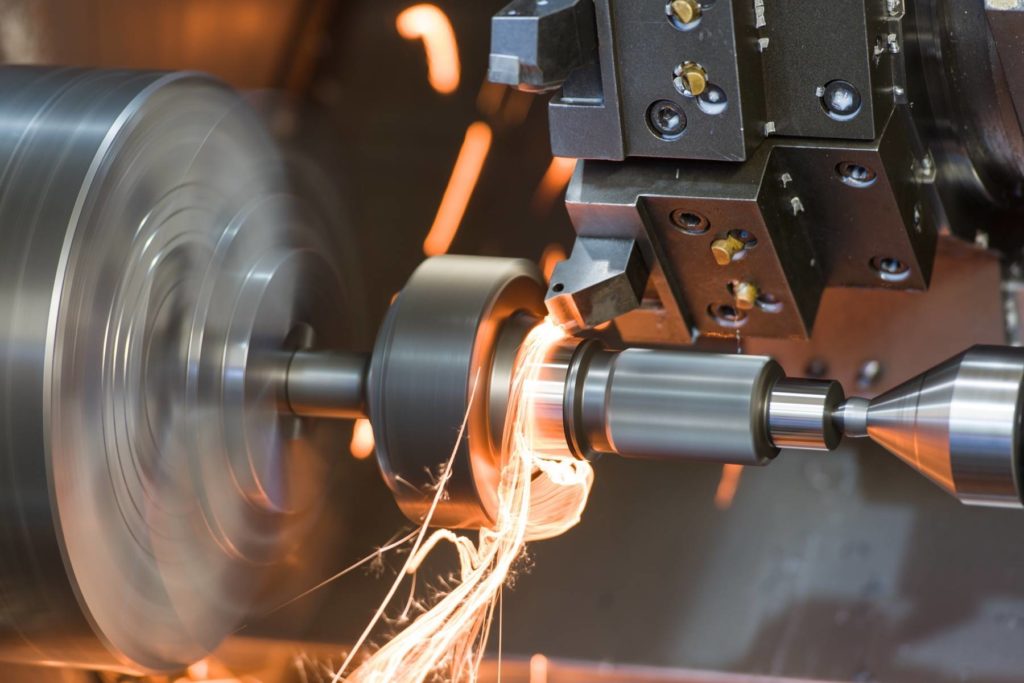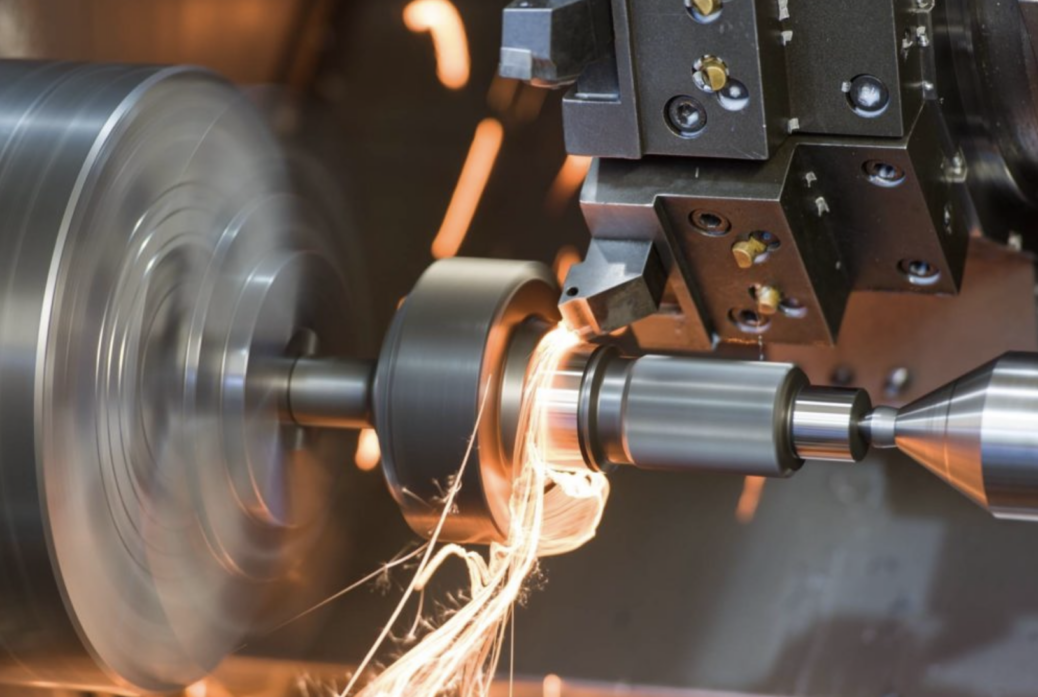
When there exists no other way to manufacture a piece of product, machining is generally preferred. The reason for this might be economical considerations. Usually, machining operations utilized in complex shapes and small numbers. It takes considerable amount time to machine a particular product. If parts with intricate shapes are to be machined, higher amount of chip will be removed. Therefore, it would make much more sense to choose other ways of production which cost less, if technically suitable for your case.
Percentage of waste material might be considerably high. For instance, in machining of some aircraft parts, nearly 95% of material is chipped away. But there is no production method exists for the fabrication of some specific parts.
Main Types of Machining Operations
There exist several types of machining operations and each of them has a different function and application. These types include machining operations such as fabrication of shafts and cylindrical shapes, threading and drilling holes on a product, obtaining final products having complex geometrical shapes like the five-axis milling process. The diversity of the applications are very plenty and it solely depends on the selection of the machining method among different kinds.
Milling process
Milling is defined as one of the machining operations which cuts the workpiece moving radially by utilizing a cylindrical cutting tool containing several sharp teeth for cutting on the circumference. Rotational movement of the cutting tool contacts with the surface of the product by moving linearly. When it happens, the milling process begins. It will cut away the material from the surface.
Workpieces having intricate geometrical shapes can be easily milled by utilizing a milling machine. In modern applications, the integration of milling machines with computer software enables producers to control the milling processes with computer numerical control (CNC) methods. Moreover, milling machines with 5-axis operational capabilities that can freely move in five axes are becoming increasingly popular, day by day. In this type of milling machine, no re-tensioning is necessary during machining operations.
Boring, Reaming, Tapping, and Drilling Processes
Boring, tapping, reaming and drilling are machining processes that are used in creating holes in the product.
Reaming process
Reaming is one of these machining operations done after holes are drilled. A reamer can be described as a cylindrical tool for cutting, peripheral edges of cutting. These edges of cutting are hardened and slept. This enables them to give low surface roughness and high accuracy on the machined section of the surface. For the realization of fits, reaming is one of the most common methods available.
Tapping process
Tapping is a type of machining process in which a thread is applied inside a drilled hole. The cutting tool which is used for tapping is called tap. It is a cross-shaped cutting tool and it is located inside an imaginary cylindrical shape. At the ending point of this cross, on the circumference, cutting grooves exist in the shape of the wire. As the depth of the stud increase, these grooves of cutting goes deeper, thus, it need not cut the complete thread by rotating once.
When tapping is difficult due to the hardness of the material, this process can be done in more than one step. So it can be said that multiple tapping operations are done with the increasing depth of the groove subsequent to each tapping.
Drilling process
In this machining process, a tool for cutting which contains two edges of cutting is making radial movements around its axis and moves linearly in a one-way direction. By using this process, round holes are obtained on the product. During drilling processes, the removed chips from the material move upwards. Another sub-type of this process is the long-hole drill process applied to metals. The deep-hole drill is another name for it. By using a long-hole drill, holes until 35 times diameter are possible to be drilled.
Grinding, Honing, Turning and Lapping Processes
Grinding, lapping, and honing are some of the machining operations which can be related to the operations done on the workpiece surface.
Grinding process
Grinding is the removal of material from the surface for obtaining a clean and smooth finish. For example, in metallic grinding, the material is removed from the surface as chips. As a result, the surface roughness is reduced and the surface reflects the light more uniformly and vertically, thus the workpiece appears to be shinier.
Grinding is known as an accurate process among other machining operations. In this process, a fine-grained grindstone is utilized. These grains are very hard and brittle specs of abrasives and each of them is like a cutting tool. These grains will eventually break down into sharp needle-like abrasive grains and they will carry on the process. It takes time for the grindstone to be substituted with a new one since it is difficult to make it blunt.
Honing process
Honing is known as one of the machining operations where three grinder stones inside in a hole are pressed through outwards. These radially driven grinding wheels are combined and move on a vertical axis. Grooving is done on the cylindrical surface. Smoothening of engine cylinders is done by honing.
Turning process
Turning is applied for processing round objects. A lathe is used in the turning process. Three main operations are done on the lathe: clamping, driving, and linear motion. This linear movement occurs in two directions. The cutting tool is moved back and forth around the workpiece located in the center. It is used in concentric cutting applications.
The object to be shaped is clamped at the center and radially driven. The necessary power for machining is provided by the object to be shaped itself.
Cutting tools are linearly moved in two directions for executing machining operations. The dimensions and shape of the cutting tool can differ according to the application. The user realizes the movement of the cutting tool in two directions. This is also possible by electrical equipment or scale located on the top of the driving wheel. High accuracy in the movement of the cutting tool can be achieved by this method. Furthermore, these lathe operations can be fully automated. On both inside and outside, chisel is available for the machining process.
The center which moves linearly is used for making a hole at the center of the axis. It is done by firstly drilling, then clearing. Also, for increasing the levels of tolerance for cutting work, a center might be benefited from the support.
Lapping Process
Lapping is one of the types of post-machining processes. Round objects are put between two groovy rotating cast-iron discs. One disc is stationary while another one rotates with a spherical object inside. These spherical objects are ground by the addition of pasta to increase pressure. Roughness and accuracy of the shape are two important parameters in the lapping process.
A combination of multiple types of cutting tools is possible. As a consequence, shape diversity and higher machining accuracy can be achieved on a lathe. The following examples can be given for turned products: bearing brushes, winches, drive shafts having screw thread and cone at the end, etc.
Machining tips
The machining has a complicated nature since too many features and different functions gather around and they should be well-coordinated. Crucial factors are:
- The tool design and geometry
- The material of the cutting tool
- Rate of feed, depth of cutting, speed of cutting and speed
- Input of heat and selection of the material
You May Be Interested:
Machining Operations for Steel Fabrication


